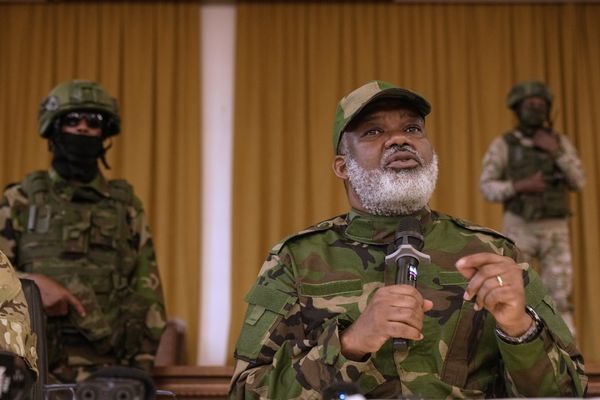
Captain Oates was from the 6th Inniskilling Dragoons and in charge of the expedition's ponies, which he thought were a bunch of "crocks". Nevertheless, their performance exceeded expectations, in large part due to his care. Scott made two portraits of Oates, but only achieved the correct exposure in this one. Photograph: Little, Brown Book Group

Although Scott's was a British expedition, it had support and personnel from 10 countries, making it an international effort. The two members from the Russian Empire, dog driver Demetri Gerof and Ukrainian stable hand Anton Omelchenko, provided lively dance entertainments on festive occasions Photograph: Little, Brown Book Group

The hut at Cape Evans, showing the large number of stores stacked outside, including dozens of sledges leaning against the roof, boxes of Fry's cocoa and a bath tub. The photograph was taken by Scott to practise using lenses, filters and other apparatus. Once on the trail to the pole, and under pressure from time and conditions, only considerable familiarity with the equipment would deliver the quality of image required for scientific purposes. Even in the learning process, Scott gives an intimate picture of the amount of organisation required for his men's survival in the Antarctic Photograph: Little, Brown Book Group

Wilson is seen here sitting quietly, sketching. He was one of the last artists in the great expedition tradition in which the pencil was the main method of making records. He produced many yards of accurate geographical drawings, as well as extensive notes and sketches of anything of scientific interest. Here he is drawing the mountain ranges along the Beardmore Glacier, from Mount Elizabeth (left) to the Socks Glacier and Mount Fox (right).
This panorama is the finest example of Scott's mastery of his camera, gained on the march in extreme conditions. The combination of action and repose – illustrative of Scott's unique pictorial understanding – encapsulates the contrast between the Antarctic's majesty and man's diminutive presence Photograph: Little, Brown Book Group

As the pony column disappears into the distance, the "sledgeometer" on the final sledge clicking the mileage as it goes, the straggle of ponies becomes veiled in the icy wilderness. Many of the men in this image would return, but not all. None of the ponies would: within a few days they would be shot Photograph: Little, Brown Book Group

Scott took this impressive image to capture the interesting geological features around Mount Wild. On the sledge in the camp, two figures can be seen sketching. On the left, Apsley Cherry Garrard is drawing the view towards Mount Buckley; on the right, Edward Wilson is making detailed sketches and notes of the geological features so clearly visible in Scott's photograph. The other figure that can be seen is probably Birdie Bowers, who died with Scott on their return from the polar expedition, just months later. Scott returned his camera to base with the First Supporting Party as they departed from the top of Beardmore Glacier towards Cape Evans. Critically, this lightened the sledge loads for the push across the Polar Plateau to the South Pole. Bowers, with his lighter camera, was chosen by Scott to become the photographer for the final pole party Photograph: Little, Brown Book Group







